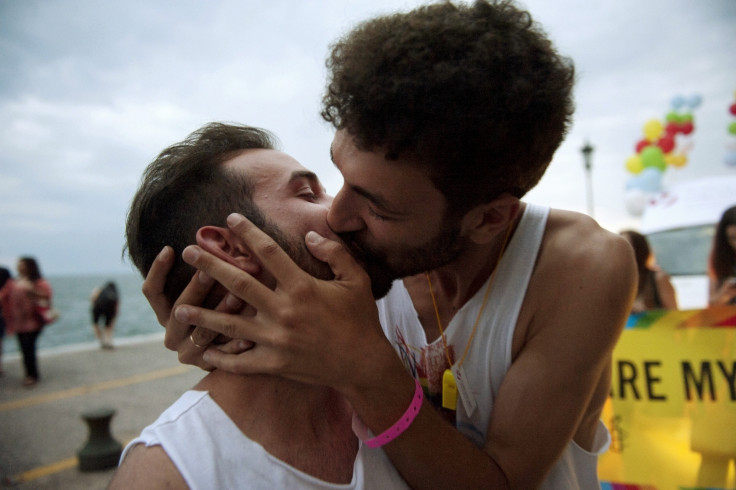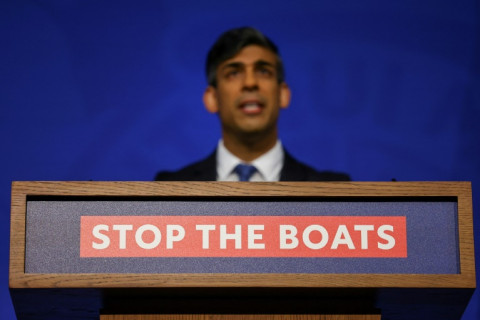Mostly straight: The growing trend of heterosexual men who are attracted to men
Not gay, not bisexual, but not quite straight - these men fit into the 'mostly straight' category of sexual orientation
Gay, straight, bisexual: for decades these have been the only labels widely used to describe our sexual identities. But for "mostly straight" men, these terms don't quite cut it.
No, these aren't men who are secretly bisexual, or afraid of coming out as gay. They're not disgruntled straight guys temporarily tired of women or unhappy with heterosexual sex. "Mostly straight" is a sexual orientation as valid as "gay" which describes a specific set of sexual and romantic feelings, Ritch C -Savin-Williams, Professor Emeritus of Developmental Psychology at Cornell University, tells IBTimes UK.
In his new book Mostly Straight Sexual Fluidity Among Men, Professor Savin-Williams interviewed around 40 men aged 20 who reported having feelings towards other men but were adamant they were heterosexual.
Professor Savin-Williams pinpointed a growing trend of young men who are secure in their heterosexuality "yet remain aware of their potential to experience far more". These mostly straight men may have fantasised about another guy at some point, or made out with a friend. Perhaps they have participated in a "group jerk-off", and are open to accepting oral from an attractive man - if the opportunity presented itself. Between 5-10% of their sexual and romantic feelings involve men, but they are unlikely to have had anal sex with a man, but would probably try it in the right circumstance. They may have had a "man crush", but never felt same-sex love. Developmentally, these feelings - shadowed by their attraction to girls and women - have been present for as long as they could remember.
Mostly straight men are also different to those who have "bud-sex" or "dude-sex", stresses Professor Savin-Williams. Mostly straight men aren't expressing power dynamics in same-sex relations, as prisoners might, neither are they simply exploring pleasure, nor having these feelings because women are "not available". "Mostly straight is different from these situations because it is derived from a biological sexual and or romantic orientation—from genuine desire. It may also be adopted as a sexual identity," he explains.

While researching his book, Professor Savin-Williams was surprised to find that men are sexually fluid over time and circumstances, and mostly straight men are extremely pro-gay in their personal behaviours.
Although he doesn't openly identify as mostly straight, The Hunger Games actor Josh Hutcherson has played an important part in the visibility of this group, says Professor Savin-Williams, after he revealed in 2013 that he loves women but had found other men "good-looking" and that he believed "defining yourself as 100 percent anything is kind of near-sighted and close-minded".
Since then, a number of studies have been published into the phenomenon of straight men who have sex with men, although these didn't investigate "mostly straight" men specifically.
A survey of 9,000 men aged between 18 to 44 by the US Centres for Disease Control and Prevention showed that the number of straight men who had sex with another man had spiked in recent years.
And in 2015, Dr Jane Ward examined men in between straight and bisexual in her book Not Gay: Sex Between Straight White Men and found that homosexual contact is a "normal part of the male experience".
In contrast, much literature suggests that most women are bisexual or sexually fluid to some extent, says Professor Savin-Williams. And up until now, some sexologists believe that men are either gay or straight, and even debate whether there are "true" bisexual men. That is because research into sexual arousal and orientation often uses genital enlargement measures to assess how men react to visual stimuli such as naked images and videos. But the same techniques don't mark out sexuality in women.
"My perspective and research supports another view: men are as 'fluid' or nonexclusive in their sexuality as are women but because of social stigma, the call of masculinity, men are less willing to say they are not straight unless, of course, they are totally gay," he says.
The evidence suggests that "mostly straight" men have always existed "but in previous generations it was seldom recognised as such or did not form a sexual identity," says Professor Savin-Williams.
At some stage in the future, Professor Savin-Williams hopes to see a world where labels like "mostly straight" will be meaningless and having same-sex partners isn't an issue. For now, however, such terms are important in the fight for LGBT rights, he says.
"My goal is to enhance the disappearance of sexual labels by revealing the absurdity of three labels through saying 'here are two more' and then more, and then saying, 'look, we're all along the same sexual and romantic spectrum. There is no gay, no bisexual, no straight'."
He adds: "I want boys and young men to read the stories such that they will become more tolerant and accepting of their mostly straight friends and, perhaps, recognise that they too are mostly straight."






